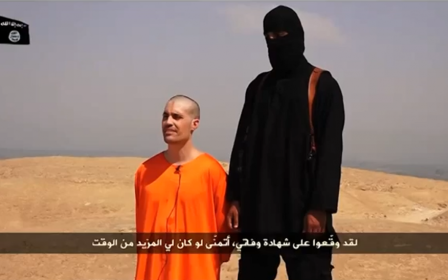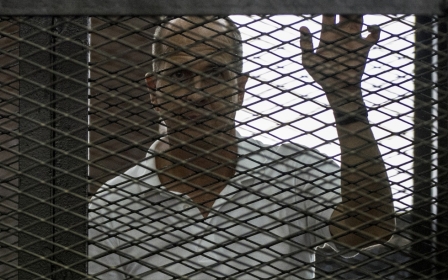The targeting of local journalists

Covering the Middle East for journalists has always has had its challenges, with many countries in the region practicing tight censorship and other reporting restrictions. However, since the Arab uprisings it has become a particularly dangerous place to be a journalist.
When a western journalist is killed it rightly attracts extensive media coverage and reminds us of the very real dangers facing conflict journalists today. In Syria, for instance - currently the most dangerous place to be a journalist - 12 international journalists have been killed, and over 40 have been kidnapped since the beginning of the conflict in May 2011, the majority of whom were later released.
Those killed have included veteran Sunday Times correspondent, Marie Colvin who, with French freelance journalist Remi Ochlick was among the first to die covering the conflict in January 2012, when the Bab Amr media centre they were staying in was shelled by pro-regime forces. And most recently, and horrifically, James Foley, a freelance journalist reporting for AFP and Global Post, was murdered by the Islamic State (formerly ISIS) on 19 August after twenty one months in captivity.
While it is right and proper for the world to feel shocked and horrified when an international foreign journalist is killed for doing their job, it is important to remember that the vast majority of those killed every year in the Middle East are journalists working in their own countries. With many working as freelancers, they are always the most vulnerable, with less opportunity to leave when their reporting becomes too dangerous or disliked by governments, groups or regimes.
52 Syrian journalists have been killed reporting on the conflict in their country - more than four times the number of foreign journalists. But their deaths do not generate the same amount of international media attention. For instance who remembers freelance video journalist Rami Al Sayed who was killed the same day and in the same place as Colvin and Ochlik? Or the death of his cousin, video journalist Basil Al Sayed, who was killed in a checkpoint shooting in Homs a few months earlier?
Local Syrian journalists having been taking great risks to cover events since the start of the conflict and they have continued to do so even as the news cycle moves on to other world events. Many have been detained, tortured, and killed by the Assad regime. Many others have died in indiscriminate aerial bombardments of civilian areas or been killed in cross fighting between opposition and regime forces like Molham Barakat a freelance photojournalist who was killed during a rebel assault on Kindi Hospital in the northern city of Aleppo last December.
Syria is not the only place in the Middle East which is dangerous for local journalists to work in. The Ministry of Information in Gaza has put the death toll of journalists at 17, since the beginning of the most recent Israeli military offensive, in early July. Iraq has consistently been a perilous beat for local journalists since the US invasion in 2003. This year, four have been killed and 22 in the same period of time as the time span of the Syrian conflict. Egypt too has made an appearance in dangerous places to be on journalist lists. Six journalists were killed last year - three in one day as they covered the clashes between Egyptian security forces and supporters of the ousted President Mohamed Morsi in August 2013.
It's not just Western journalists who have become the targets of extremist groups such as IS. In Syria and Iraq, the majority of journalists who have been kidnapped by these groups are local. Some have been released after being held captive for several months, enduring torture and interrogation, being accused of being spies or traitors for working with foreign press. Others, such as Syrian journalist Rami al-Razzouk who was working for local media outlet, Radio ANA, has been missing since since October 2013. With the advance IS have made in Iraq in recent months, including the taking of Iraq’s second city Mosul, we have seen local journalists targeted and abducted by them because of their work.
Another issue that affects local journalists and does not get reported widely, is the number that have had to flee into exile because of the intimidation and violence that they face. On World Refugee Day this year The Committee to Protect Journalists documented 44 Syrian journalists who have been forced into exile since the start of the conflict. This is the second highest worldwide after Iran, which has consistently topped the league tables since the disputed presidential elections of 2009 when it comes to arresting and intimidating local journalists, forcing many to leave their work, family and homes to seek safety elsewhere.
And many are also forced to leave the industry as they struggle to settle in an alien country.
Understandably foreign media outlets are very reluctant to send their own journalists into places like Syria because of the danger in operating inside the country. Yet we still see images and reports coming out from inside Syria. And in places like Gaza, Iraq and Egypt local journalists, many of them freelance, continue to play a vital reporting role. So it is important to remember that journalists in these countries and throughout the Middle East face considerable risk and danger as they bring stories, images and information to the world.
The views expressed in this article belong to the author and do not necessarily reflect the editorial policy of Middle East Eye.
Photo credit: Journalists protest in support of detained al-Jazeera journalists in February 2013 (AFP)
Stay informed with MEE's newsletters
Sign up to get the latest alerts, insights and analysis, starting with Turkey Unpacked
Middle East Eye delivers independent and unrivalled coverage and analysis of the Middle East, North Africa and beyond. To learn more about republishing this content and the associated fees, please fill out this form. More about MEE can be found here.





